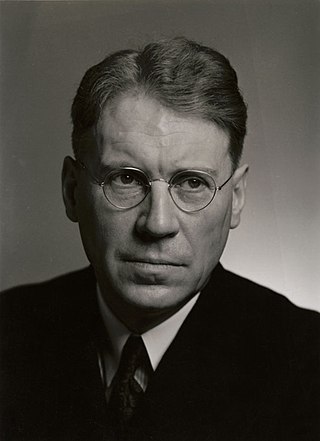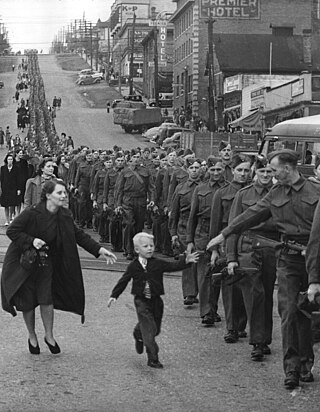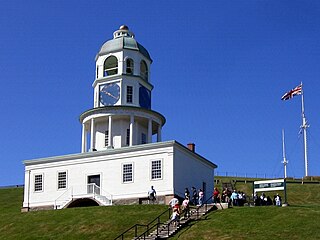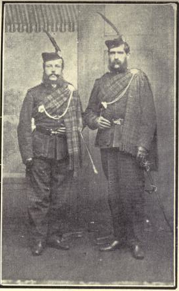
The International Brigades were soldiers recruited and organized by the Communist International to assist the Popular Front government of the Second Spanish Republic during the Spanish Civil War. The International Brigades existed for two years, from 1936 until 1938. It is estimated that during the entire war, there were between 40,000 and 59,000 Brigaders, including some 10,000 who died in combat. Beyond the Spanish Civil War, "International Brigades" is also sometimes used interchangeably with the term foreign legion in reference to military units comprising foreigners who volunteer to fight in the military of another state, often in times of war.

The Lincoln Battalion, the major component of what came to be known as the Abraham Lincoln Brigade, was the 17th battalion of the XV International Brigade that fought in the Spanish Civil War. Named after United States President Abraham Lincoln, the battalion was organized by the Communist International. The XVth Brigade was one of many mixed brigades that comprised the International Brigades.

General Sir John Coape Sherbrooke, was a British soldier and colonial administrator. After serving in the British army in Nova Scotia, the Netherlands, India, the Mediterranean, and Spain, he was appointed Lieutenant-Governor of Nova Scotia in 1811. During the War of 1812, his policies and victory in the conquest of present-day Maine, renaming it the colony of New Ireland, led to significant prosperity in Nova Scotia.

James Layton Ralston was a Canadian lawyer, soldier, and politician. A Nova Scotian and a lawyer by training, Ralston fought with distinction during the First World War and pursued a career in the Canadian Army, before becoming a Liberal Member of Parliament. During the Second World War, he served as Minister of National Defence from 1940 to 1944, when he was forced to resign by Prime Minister William Lyon Mackenzie King because of his support for the introduction of conscription.

Angus Lewis Macdonald, popularly known as 'Angus L.', was a Canadian lawyer, law professor and politician from Nova Scotia. He served as the Liberal premier of Nova Scotia from 1933 to 1940, when he became the federal minister of defence for naval services. He oversaw the creation of an effective Canadian navy and Allied convoy service during World War II. After the war, he returned to Nova Scotia to become premier again. In the election of 1945, his Liberals returned to power while their main rivals, the Conservatives, failed to win a single seat. The Liberal rallying cry, "All's Well With Angus L.," was so effective that the Conservatives despaired of ever beating Macdonald. He died in office in 1954.

The Mackenzie–Papineau Battalion was a Canadian military unit that volunteered to fight with the XV International Brigade on the Republican side in the Spanish Civil War. Except for France, no other country had a greater proportion of its population volunteer in Spain as did Canada. The Canadian soldiers were engaged in some of the fiercest battles of 1937-38 and suffered heavy casualties.
Alexander Albert MacLeod was a political organizer and a prominent member of the Communist Party of Canada and, later, of its legal group, the Labor-Progressive Party. He was an elected Member of Provincial Parliament in Ontario (1943–51).

James Lorimer Ilsley was a Canadian politician and jurist. He was minister of finance from 1940 to 1946. He was finance minister during World War II; to fund the increase in wartime expenditure, he dramatically expanded the income tax by imposing it on millions of workers and citizens.

Starting with the 1763 Treaty of Paris, New France, of which the colony of Canada was a part, formally became a part of the British Empire. The Royal Proclamation of 1763 enlarged the colony of Canada under the name of the Province of Quebec, which with the Constitutional Act 1791 became known as the Canadas. With the Act of Union 1840, Upper and Lower Canada were joined to become the United Province of Canada.

During the world wars and interwar period, 1914–1947, Canada experienced economic gain, more freedom for women, and new technological advancements. There were severe political tensions over issues of war and ethnicity, and heavy military casualties. The Great Depression hit Canada hard, especially in export-oriented mining and farming communities, and in urban factory districts.
James Gordon Fogo, was a Canadian lawyer and senator.

Socialism in Canada has a long history and along with conservatism and liberalism is a political force in Canada.

The Abraham Lincoln Brigade was the name given to the 2,800 Americans who volunteered to fight for the Spanish Republic against the Nationalists in the Spanish Civil War. The Americans were organized into several battalions that were assigned to the XV International Brigade, which was one of many such mixed brigades within the International Brigades.

The Halifax Rifles (RCAC) is a Canadian Army regiment that served between the years of 1860 and 1965 before being reduced to nil strength and placed on the Supplementary Order of Battle. The regiment was reactivated on May 10, 2009, as a reserve force unit performing the role of armoured reconnaissance. It is the first and only regiment since the 1960s to be reactivated from the Supplementary Order of Battle.

This timeline of the history of the Halifax Regional Municipality documents all events that had happened in Halifax, Nova Scotia, Canada, including historical events in the former city of Dartmouth, the Town of Bedford and Halifax County. Events date back to the early 18th century and continue until the present in chronological order.

Nova Scotia is a Canadian province located in Canada's Maritimes. The region was initially occupied by Mi'kmaq. The colonial history of Nova Scotia includes the present-day Maritime Provinces and the northern part of Maine, all of which were at one time part of Nova Scotia. In 1763, Cape Breton Island and St. John's Island became part of Nova Scotia. In 1769, St. John's Island became a separate colony. Nova Scotia included present-day New Brunswick until that province was established in 1784. During the first 150 years of European settlement, the colony was primarily made up of Catholic Acadians, Maliseet, and Mi'kmaq. During the last 75 years of this time period, there were six colonial wars that took place in Nova Scotia. After agreeing to several peace treaties, the long period of warfare ended with the Halifax Treaties (1761) and two years later, when the British defeated the French in North America (1763). During those wars, the Acadians, Mi'kmaq and Maliseet from the region fought to protect the border of Acadia from New England. They fought the war on two fronts: the southern border of Acadia, which New France defined as the Kennebec River in southern Maine, and in Nova Scotia, which involved preventing New Englanders from taking the capital of Acadia, Port Royal and establishing themselves at Canso.
Jules Peter Paivio was a Canadian architect, professor, and soldier. A veteran of the Spanish Civil War, he was the last surviving member of the Mackenzie–Papineau Battalion.

The Victoria Rifles was a military unit of black soldiers in Halifax, Nova Scotia, that was established in 1860 in the wake of the Crimean War and on the eve of the American Civil War. It was one of the oldest black units established in Canada. On January 30, 1860, at a meeting of the Victoria Rifles, George Anderson was elected Captain and John H. Symonds elected First Lieutenant.
Aukusti "Aku" Päiviö was a Finnish Canadian journalist, poet and socialist. With Sanna Kannasto and A.T. Hill, he was one of the key figures in the Finnish Canadian socialist movement of the early 1900s. Päiviö was a Marxist who saw education as the most important part of the class struggle.

Walter Benjamin Garland was an American soldier, activist, and politician. Garland was a volunteer in the Washington Battalion of the XV International Brigade fighting for Republican Spain during the Spanish Civil War. Following the conclusion of the war, Garland joined Communist Party USA and ran for office in New York. He later worked alongside Paul Robeson as a bodyguard. Garland died in Columbus, Ohio in 1974.
















